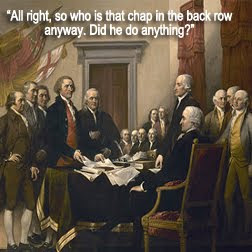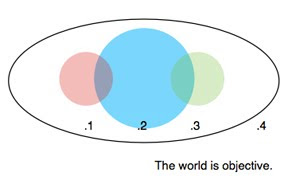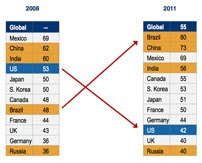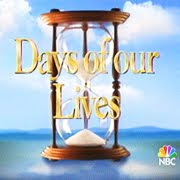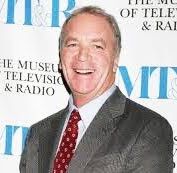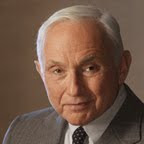 More than anything else, exposure remains the number one measure for Internet success. Facebook page managers want more fans. Twitter account holders want more followers. YouTube producers want videos to go viral. Bloggers want more traffic. More, more, more.
More than anything else, exposure remains the number one measure for Internet success. Facebook page managers want more fans. Twitter account holders want more followers. YouTube producers want videos to go viral. Bloggers want more traffic. More, more, more. But more is not always better.
If exposure is the measure, then the biggest losers are all winners. There are thousands of examples. Here are a few.
Nestle learned that fan pages could become a billboard of outrage on behalf of critics. Kenneth Cole exhibited no empathy for Egypt on Twitter. With 1.4 million views, Microsoft wins with this video gem. And Kathy Sierra would have never quit blogging.
Great marketers know that they don't have to convince everyone to love the Ford Taurus. They know that they only have to find people who like the features that the Ford Taurus offers. Likewise, Christina Aguilera wants to be known for her singing. Right now, people are more likely to know she blew the National Anthem at the Super Bowl and tripped at her Grammy performance.
More only works for vanilla.
 When you give coffee-flavored ice cream to kids, they make funny faces (so do I). But that doesn't mean we always have to serve vanilla, the most popular ice cream flavor. We also don't always have to eat pepperoni and cheese pizzas, which account for 25 percent of all pizza sales. And we don't all drive white cars, which is the color 21 percent of car buyers prefer.
When you give coffee-flavored ice cream to kids, they make funny faces (so do I). But that doesn't mean we always have to serve vanilla, the most popular ice cream flavor. We also don't always have to eat pepperoni and cheese pizzas, which account for 25 percent of all pizza sales. And we don't all drive white cars, which is the color 21 percent of car buyers prefer. It seems only social media gives more value to popularity than personal choice or quality content. People watch videos that are watched, like Facebook pages that are liked, follow Twitter streams with followers, and leave comments on blogs where they "think" more people will see their comments.
Ironically, most of those leaders tend to offer exactly what you might expect. Vanilla, pepperoni, and white. In tracking about 250 blogs, daily, for almost a year, we found popularity to be the biggest lie of all in democratizing the Internet.
Of all the communication blogs we covered, those at the top of the Advertising Age 150 underperformed with three in the top ten failing to produce a single post that could be called a best fresh pick of the day (note: not all Ad Age participants were tracked). That doesn't mean they are necessarily bad blogs, but it does mean that they serve up more than their fair share of vanilla, pepperoni, and white. The placement of the top ten fresh picks show how far off that list can be.
Of those those that we picked with regularity, Valeria Maltoni is ranked 25th; Geoff Livingston is not ranked; Ike Pigott is ranked 607th; Lee Odden participates on Top Rank, which is ranked 10th; Jason Falls is ranked 15th; Adam Singer is 83rd; Ian Lurie is not ranked; Danny Brown is 23rd; Maria Reyes McDavis is not ranked; and Bob Conrad is not ranked.
 Advertising Age isn't alone. The few communication-related blogs that make it into the Technorati top 100 rank underperformed too. PostRank, which relies on activity, didn't prove to be any better of a measure. And neither did SEO, which is one of several reasons Google is trying to fix its algorithm.
Advertising Age isn't alone. The few communication-related blogs that make it into the Technorati top 100 rank underperformed too. PostRank, which relies on activity, didn't prove to be any better of a measure. And neither did SEO, which is one of several reasons Google is trying to fix its algorithm. Specifically, SEO proves a site can lead people to it, but no indication that people will find something useful when they land. And, that other popular consideration — bounce rates — tends to mislead. People only look at one or two posts on blogs; those that pertain to their topic of interest, which is usually aligned with the topic du jour. Few people go back and read the same ones again.
There was only one measure that seemed solid. And most people overlook it.
People tend to savor of the quality that comes with being different.
Time on site. The most popular bloggers hold people's attention for about two minutes and those minutes are sometimes spread across as many as three or more pages (and that includes time for people to leave a comment). Higher quality posts tend to hold people for about four to five minutes (based on real time graphs, not averages that are also misleading).
Even among blogs that were picked for one or two posts during the year, we noted small surges in the time people spent on the fresh pick post compared to other posts read. This held true even for fresh pick posts that didn't draw very much traffic. Those posts were enjoyed by the traffic they drew. And that makes all the difference.
 It reminds me a little bit about the Twitter stunt shitmydadsays. Two million fans with long gaps between tweets and never a response. Did they ever read the book? It starts out as if it could be funny, but never delivers. And yet, it's triteness is offset only because it is vanilla. It's perfect for a television series on CBS, even though it lost 25 percent of its audience after the first show. It has a balanced following now, being saved by William Shatner.
It reminds me a little bit about the Twitter stunt shitmydadsays. Two million fans with long gaps between tweets and never a response. Did they ever read the book? It starts out as if it could be funny, but never delivers. And yet, it's triteness is offset only because it is vanilla. It's perfect for a television series on CBS, even though it lost 25 percent of its audience after the first show. It has a balanced following now, being saved by William Shatner. That's how it goes sometimes. Did you ever consider that nobody boasts about eating vanilla, ordering a pepperoni pizza, or buying a white car? Not really.
They may mention it in the moment, but the memory of commonplace isn't all that memorable. And, when you think about it, if the content (not the personality) isn't memorable, then how could it ever be influential? Quality content makes people think.
This is the third lesson from the Fresh Content experiment, which tracked 250 blogs for almost a year. The experiment focused on the quality of the content and not the perceived popularity of the authors.












